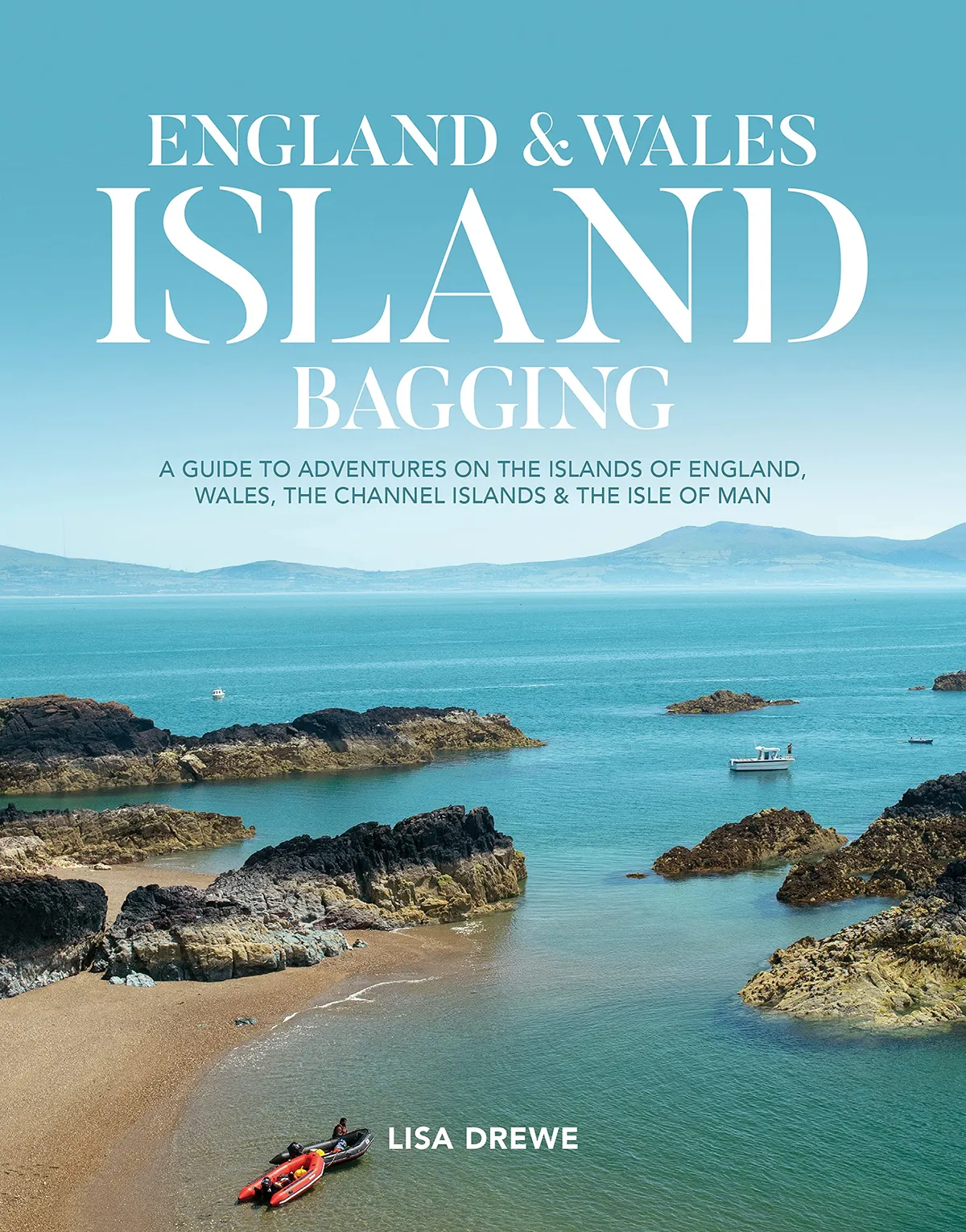The birds, animals and insects of our islands are extraordinary, both in rarity and spectacle of numbers. Travelling to these conservation frontiers, hotspots of evolution and diversity, and rest stops of migratory species offers some of the most extraordinary wildlife experiences in Britain, along with the chance to meet the equally remarkable specialists and islanders that devote their lives to monitoring and protecting them.
In her new book ‘Island Bagging England and Wales’ Lisa Drewe details some of the rare and wonderful wildlife that she has encountered on her journeys. Here she shares some of her most unusual or rare encounters:
Blonde hedgehog, (Erinaceus europaeus), Alderney, Channel Islands

A handful of hedgehogs were brought to Alderney as pets in the 1960s and either escaped or were released into the wild. Originating from just a few pairs their genetic diversity is very low, permitting the recessive characteristic of blonde spines to have initially, then continue to promulgate. Although rare elsewhere, 60% of Alderney’s 400-600 hedgehogs have blonde spines.
They aren’t albino though and have dark eyes and pink rather than black noses. They are a common sight in gardens, verges and wandering the town’s lanes; we encountered them as they snuffled around inside the tent’s entrance in the middle of the night on the wonderfully located Saye Bay Campsite. Generally found between April to October their active season may be extended during milder winters. The Alderney Wildlife Trust run weekly bat and hedgehog walks and almost guarantee a sighting.
Stick insects, Isles of Scilly, Cornwall

After a misguided act of buying my nephew stick insects without fully grasping their parthenogentic nature I was amazed to find these gangly phasmids rocking rhythmically on twigs throughout the Isles of Scilly. Four species have been found so far on these islands; Prickly (Acanthoxyla geisovii), Smooth (Clitarchus hookeri), Mediterranean (Bacillus rossius) and Laboratory/Indian (Carausius morosus).
These are non-native, introduced species which have become naturalised on all of the islands so may not really excite the wildlife connoisseur. What will though is the lesser white-toothed (Scilly) shrew (Crocidura suaveolens), not found on mainland UK; or maybe the red-barbed (St Martin’s) Ant (Formica rufibarbis), considered one of the most endangered species in the UK being only found in Scilly and Chobham Common in Surrey.
Red-knecked wallaby (Notamacropus rufogriseus), Isle of Man
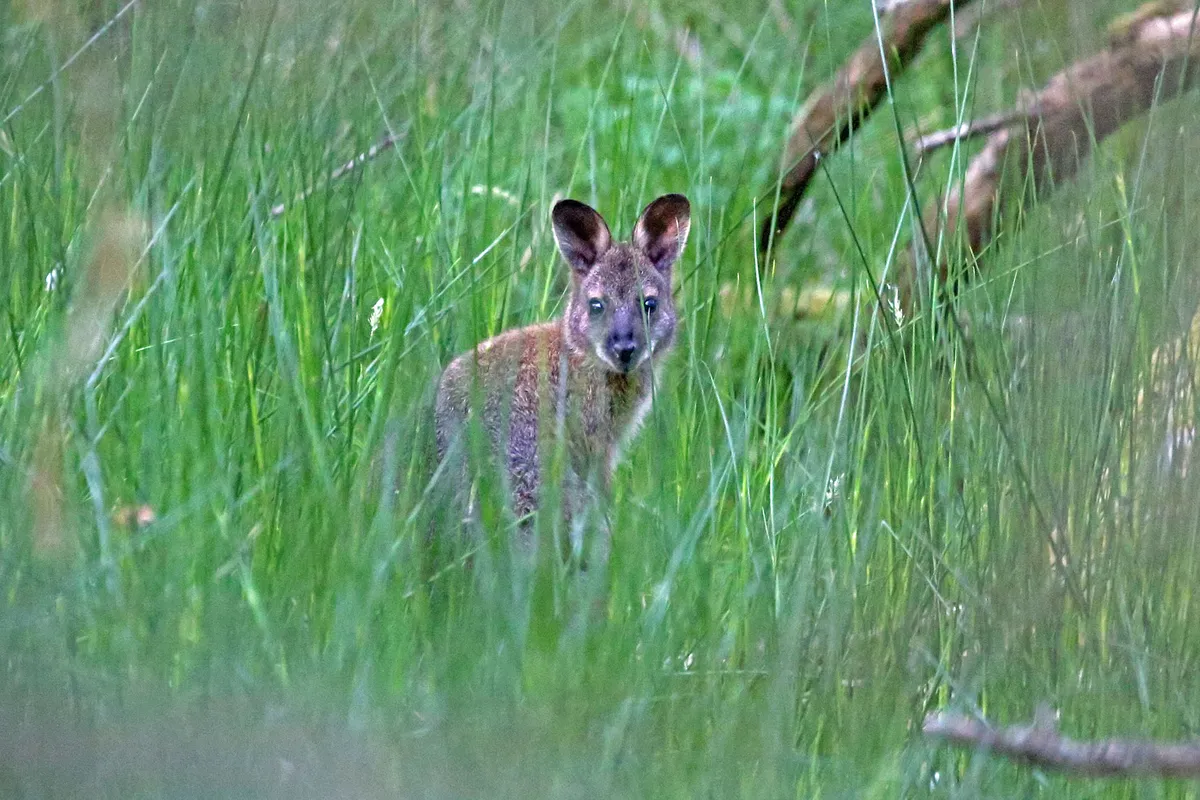
Animals native to Australia and Tasmania are possibly the last thing you’d expect to see roaming wild on this tiny island in the middle of the Irish Sea. Yet ever since a pair escaped a few decades ago from a wildlife park in the Curraghs, an area of wetland in the north-west of the island, their numbers have grown to around 120. Local guides will help you spot them or you can go it alone using the ‘Where’s Wally the Wallaby” trail map.
The Manx Wildlife Trust’s reserve at Close Sartfield near Ballaugh is a great place to spot them especially at dusk or dawn. If non-native species are of less interest, the Isle of Man has plenty of other incredible wildlife sites.
Top of the bill is the basking shark, the second biggest fish in the world, and regular visitors to the waters surrounding island between May and mid-August. Most sightings are reported within one kilometre of land along the south and south western shores of the Island. We also had the incredible experience of spotting our first Risso’s dolphin and her calf from the coastal path just south of Douglas.
Two lipped door snail (Alinda biplicata) and German hairy snail (Pseudotrichia rubiginosa), Isleworth Ait, London

The two lipped door snail (Alinda biplicata, also known as Balea biplicata) is a rare species of snail that’s very small (1-2 cm) but easily recognisable due to its elongated, left-handed shell. It can be found in the tidal Thames, especially the London Wildlife Trust’s nature reserve on Isleworth Ait. It possesses a clausilium which enables the snail to close off the aperture of the shell with a sliding "door".
Another rare, air-breathing land snail found on the same island is the German hairy snail (Pseudotrichia rubiginosa) which utilises a curious mating accessory known as the ‘love dart’ and is thought to grow hairs through its shell so the mollusc can evaporate moisture to make its slime stickier to better anchor itself to the plant it is feeding on. Access to the island is discouraged but it is possible to volunteer with the London Wildlife Trust as part of the Isleworth Ait team.
Yellow-tailed scorpion (Euscorpus flavicaudis), Sheppey Island, Kent
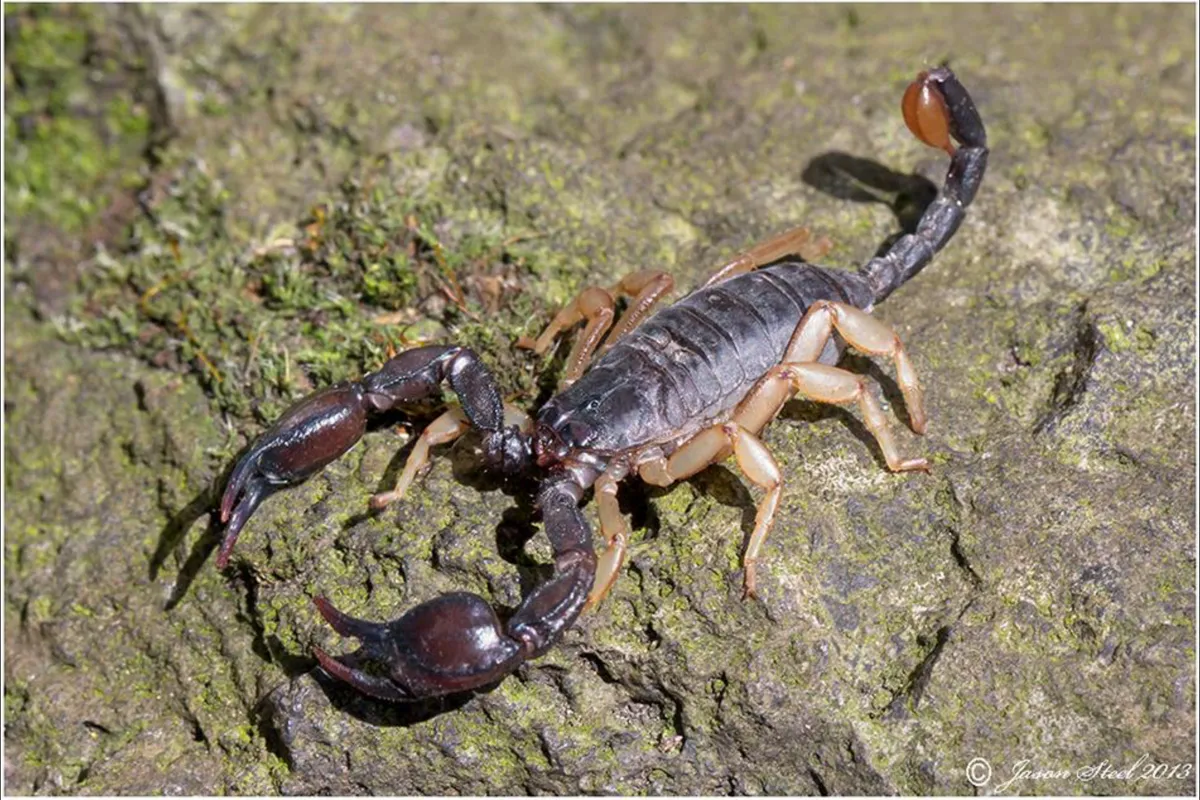
Blue Town is an unlikely spot to find creepy crawlies yet this historic town, originally built for dockworkers during the Napoleonic wars, is now home to present-day Sheerness Docks and around 15,000 scorpions. Thought to have hitched a lift on sailing ships bringing in stone to the UK during the reign of George IV, the largest and most well-known colony in the UK thrives in the walls of Sheerness Dockyard.
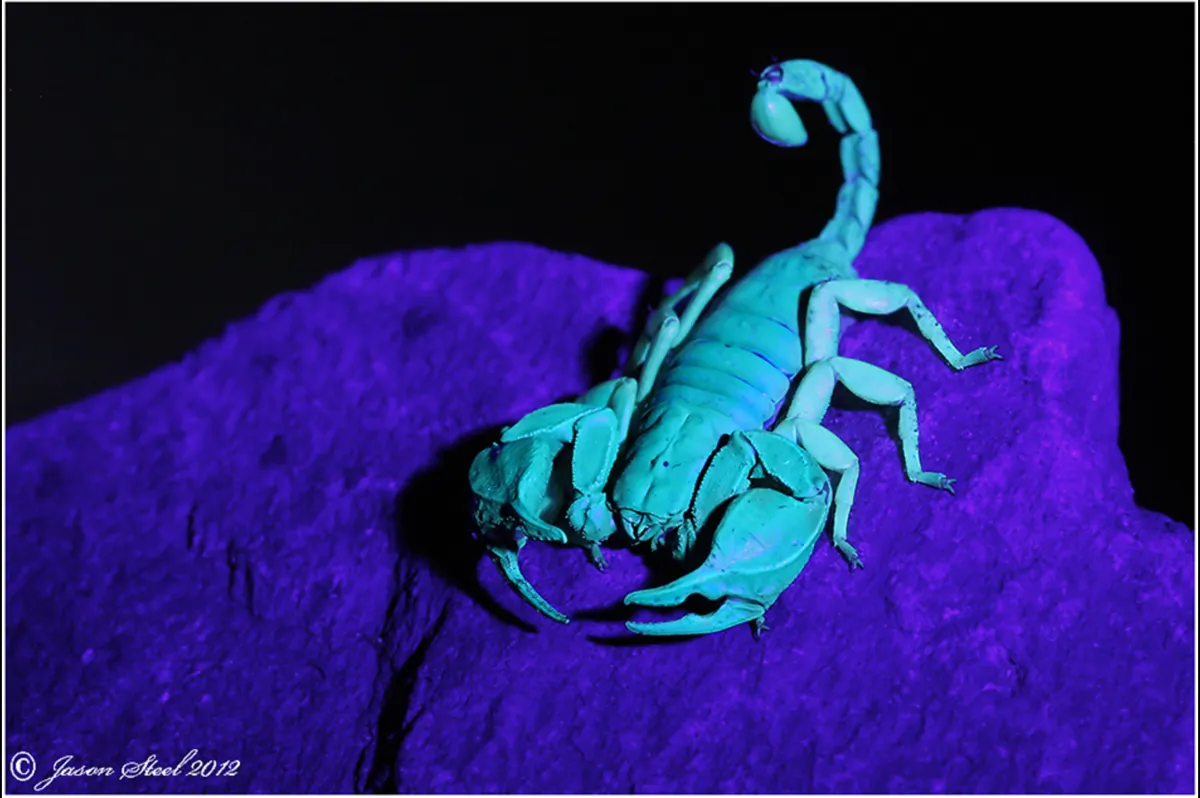
Their black body and tail, with tan coloured legs and tail may be spotted during the day if they break cover to grab their unsuspecting insect prey. Being nocturnal though the best time is to see them is at night using an ultra-violet torch which makes them glow in the dark. The pub regulars on the other side of the street often enjoy joining in with the search too. If you are unlucky and don’t spot one you can always see two scorpions displayed at the Blue Town Heritage Centre at the Criterion Theatre, Sheerness.
Spoonbill (Platalea leucorodia), Brownsea Island, Dorset
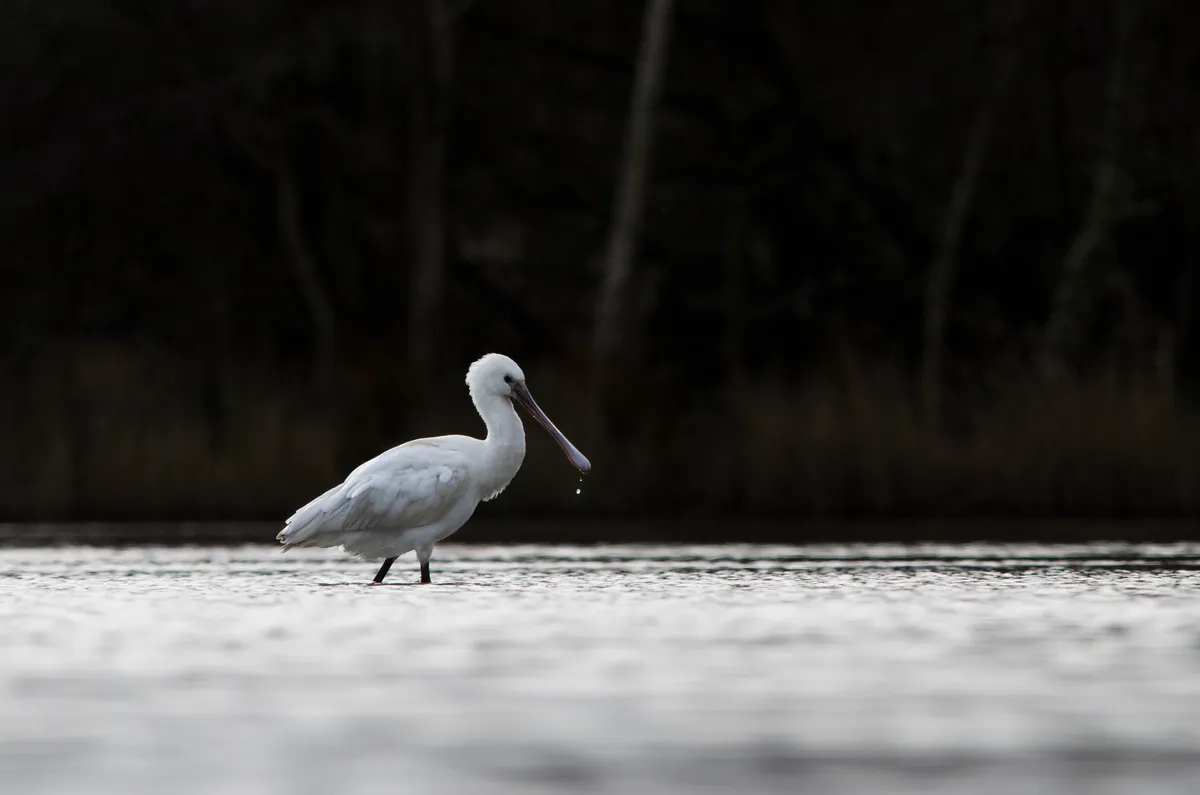
Sitting in one of the Dorset Wildlife Trust’s bird hides and looking across to the feeding spoonbills across the lagoon is a truly memorable experience. Not only are they relatively rare in the UK, the shape of their peculiar spatula-like bills and the characteristic side to side movement of their beaks through shallow water as they search for food makes for an extraordinary sight during autumn and winter.
Their bill is packed full of sensors to detect the tiniest motion of their prey – small fish, frogs, beetles, crustaceans and worms. I have also spotted them on Scolt Head Island, possible one from the larger flock at Norfolk Wildlife Trust’s Cley Marshes.
Natterjack toad (Epidalea calamita), Walney Island, Cumbria

The North Walney Nature Reserve is dominated by sand dunes, salt marsh and wet areas which provides the perfect habitat for these rare creatures found in only 60 or so places in the UK. They are Europe’s loudest amphibian with the call of the males heard up to a kilometre away as they attract females to pools around The Duddon Estuary to breed.
Smaller than a common toad, with a yellow stripe along their back their spawn looks like a long string of small black pearls which can be seen at the bottom of shallow pools. Natterjacks spend the winter months hidden away, hibernating in burrows within the dunes. They are protected by the Wildlife and Countryside Act, so just listening to them is a treat. The National Trust wardens at nearby Sandscale Haws National Nature Reserve, just north of Barrow-in-Furness on the mainland, run evening walks in the spring to hear the male chorus of these nocturnal amphibians. The best time to hear them is March – September.
Great green bush cricket (Tettigonia viridissima), Isle of Wight
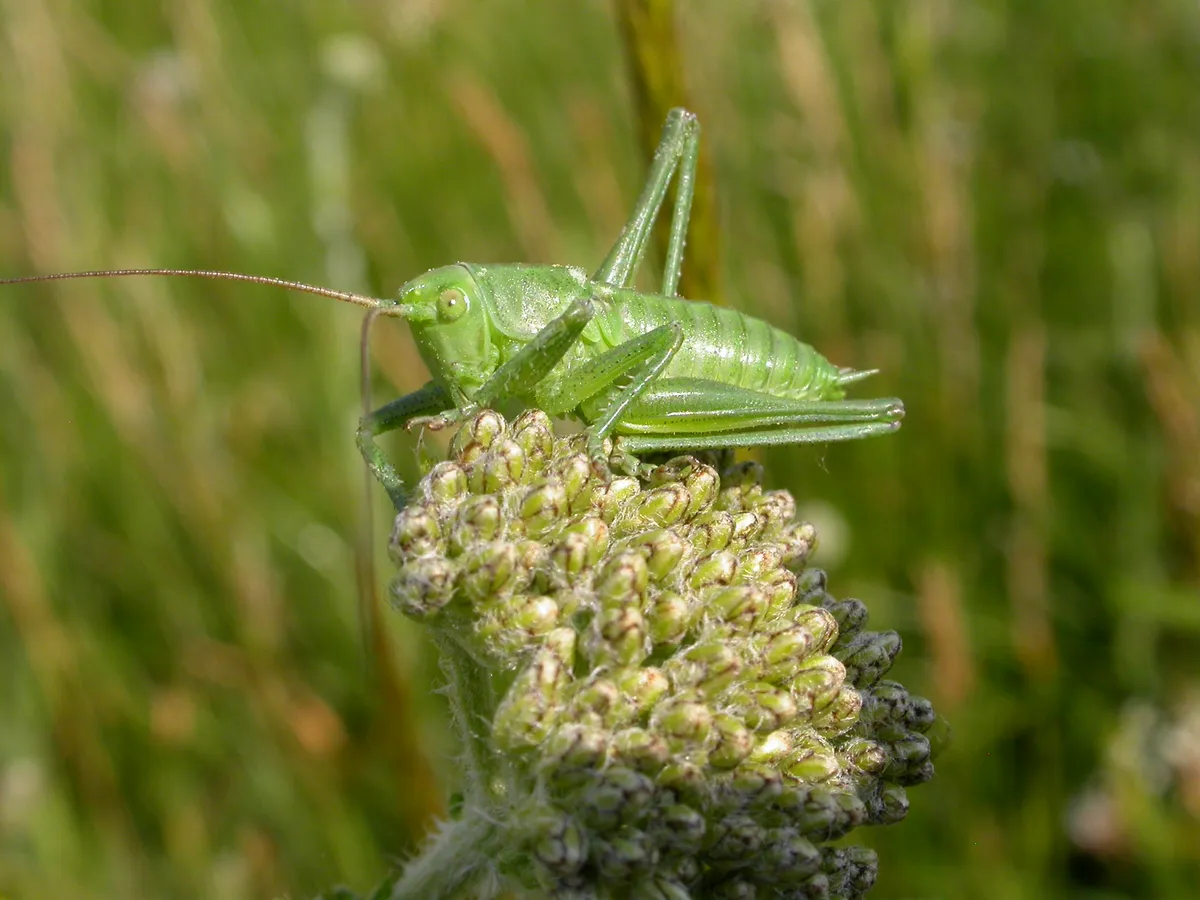
With females nearly seven centimetres long and an antennae that can be up to three times the length of the body you would think this bush-cricket would be easy to spot, certainly when you can clearly hear the male’s very loud and long ‘song’ that sounds much like a sewing machine.
On a hot day last summer, we spent several hours searching for them by zigzagging along the beautiful coombs of St Boniface Down, one of the best places to encounter them in the south east corner of the island. They are expertly camouflaged in the grassland and scrub, so do need an eagle eye. They can be spotted from late June until October. If you do find one beware, it gives a painful nip if handled.
White-tailed sea eagle (Haliaeetus albicilla), Isle of Wight

Known as ‘flying barn doors’ with their 2.5 metres wingspan the last place that you might expect to spot Britain’s largest bird of prey is fishing in The Solent on England’s south coast. Yet thanks to the release of twenty six birds on the Isle of Wight by Forestry England and the Roy Dennis Wildlife Foundation you may now be lucky enough to see them, after a 240 year absence in England.
They are not always resident as they make frequent flights across Britain, and to France, The Netherlands, Germany and Denmark. When they are at home though they may be spotted anywhere on the island at any time of the year. We had a magical afternoon watching them hunt over the waters of Newtown Bay on the island’s north coast.
Shrill carder bee (Bombus sylvarum), Canvey Island, Essex

Canvey Wick in the island’s south west corner is home to some of the UK’s rarest insects. It has been quoted as having as many species of plants, insects and animals per square metre as found in a rainforest with nearly 2,000 invertebrate species thriving amongst the undisturbed ruins of a Thames oil refinery.
The brownfield site offers the perfect haven for insects with poor, sandy soils only permitting the slow growth of vegetation, so less important species do not outgrow and overrun the wildflowers and grasses. The large asphalt circles, where the oil tanks were to have been sited, retain heat creating a microclimate ideal for species that need the warmth, like the shrill carder bee - one of Britain’s rarest bumblebees. The queen produces a loud, high pitched buzz and emerges from hibernation in April and May to build nests on the ground. She rears her small colony of workers in wax cells until October, when she heads back into hibernation.
The reserve is home to other extraordinary insects too including the bee wolf, a large solitary wasp that digs a nest in sandy spots and hunts honey bees, and the rare exploding bombardier beetle (Brachinus crepitans)which superheats a jet of boiling liquid to sprays at its unsuspecting attackers. Canvey Wick is a unique reserve to explore with the ruins of a mile-long jetty, once destined to pipe natural gas from ships to land-based silos, a reminder of its industrial beginnings and the tenacity of nature that has reclaimed it. Local groups of the Essex Wildlife Trust run walks through the reserve.
This just scratches the surface of the incredible nature that calls our islands home. Lisa has travelled to over 500 islands in Britain and has found that each has a rare species, an endemic species, a nature spectacular, or is a the chosen stopover for migratory birds and marine mammals. Island Bagging England and Wales, Channel Islands and Isle of Man details 300 islands, how to get to them and the best things to do on each from walking, swimming, history and wildlife (Vertebrate Publishing, £20).
